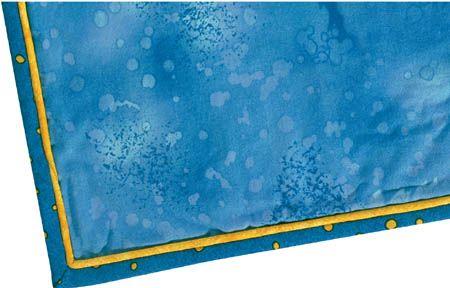Happy Endings: Finishing the Edges of Your Quilt (25 page)
Read Happy Endings: Finishing the Edges of Your Quilt Online
Authors: Mimi Dietrich
Tags: #Crafts & Hobbies, #Quilts & Quilting

If you want to insert covered cording, prairie points, gathered lace, or ruffles between the front and back of your quilt without also adding binding, simply stitch the trim to the quilt top and use the backing to finish the edges. It’s easiest to sew the trim to the quilt top before quilting your project, but if you decide to add trim after the quilting has been completed, you can still do so. Just make sure that no quilting stitches lie within ½" of the quilt edges so that you can sew the trim to the front and then turn under the seam allowance.
Method 1: Attaching Trim before Quilting
1.
Sew the desired trim around the front edge of the quilt top, using a ¼" seam allowance.
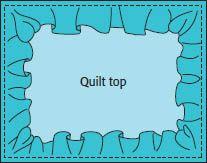
2.
Place the front and back of the quilt right sides together, sandwiching the trim inside, and pin around the edges. With the quilt top on top, sew around the quilt edges just inside the previous ¼" seam. Leave a 10" opening to turn the quilt right side out. Backstitch along each side of the opening.
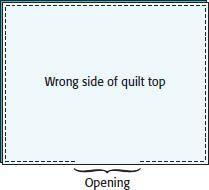
3.
Attach the batting, referring to the machine-finishing directions in “Finishing Edges without Binding” on
page 20
to complete your quilt.
4.
Turn the quilt right side out and stitch the opening closed with a slip stitch.
Method 2: Attaching Trim after Quilting
Make sure that your quilting stitches stop at least ½" from the edge of the quilt top to allow room for sewing the trim to the front and turning under the seam allowance.
1.
Sew the trim to the front edge of the quilt and the batting only. Fold the backing out of the way as you sew. Attach the prairie points, lace, ruffles, or cording to the right side of the quilt top, using a ¼" seam allowance and sewing through the quilt top and batting.
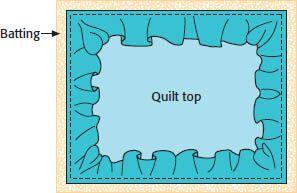
2.
Trim the batting close to the stitching.
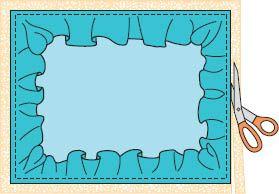
3.
Fold the trim out, away from the quilt, turning the seam allowance in, toward the batting. Press lightly on the right side.

4.
Turn the seam allowance of the backing fabric under ¼" and pin the back of the quilt to the back side of the trim, covering the seam allowance and the machine stitches. Complete the back of the quilt using a blind stitch or slip stitch.

Adding Covered Cording
Covered cording creates a thin line of trim that can be used along the edge of your quilt with or without adding binding. When used with binding, it shows up as a spark of color between the quilt top and the binding. When used without binding, it is inserted between the front and back of the quilt to accent a color or fabric in the quilt and give the illusion of very thin binding.
Uncovered cotton cording is available in most fabric stores. Purchase enough to go the distance around the quilt, plus ¼ yard. Choose "- to ¼"-diameter cording, depending on the look you desire. To cover the cording, cut 1"-wide fabric strips and piece them together to equal the length of your cording. You can use either bias or straight-grain strips. If you’ll be applying the covered cording to curves, the fabric strips should be cut on the bias.
"- to ¼"-diameter cording, depending on the look you desire. To cover the cording, cut 1"-wide fabric strips and piece them together to equal the length of your cording. You can use either bias or straight-grain strips. If you’ll be applying the covered cording to curves, the fabric strips should be cut on the bias.
1.
To cover the cording, fold the fabric strip in half lengthwise, wrong sides together. Insert the cording, pushing it snugly against the fold.

2.
Use a zipper foot on your sewing machine and set the needle so that it sews to the left of the foot. Sew the two cut edges of the fabric together using a long (basting) stitch, enclosing the cording. The zipper foot should ride comfortably along the right side of the cording.

3.
When you’ve enclosed the entire piece of cording, trim the seam allowance evenly to ¼".

